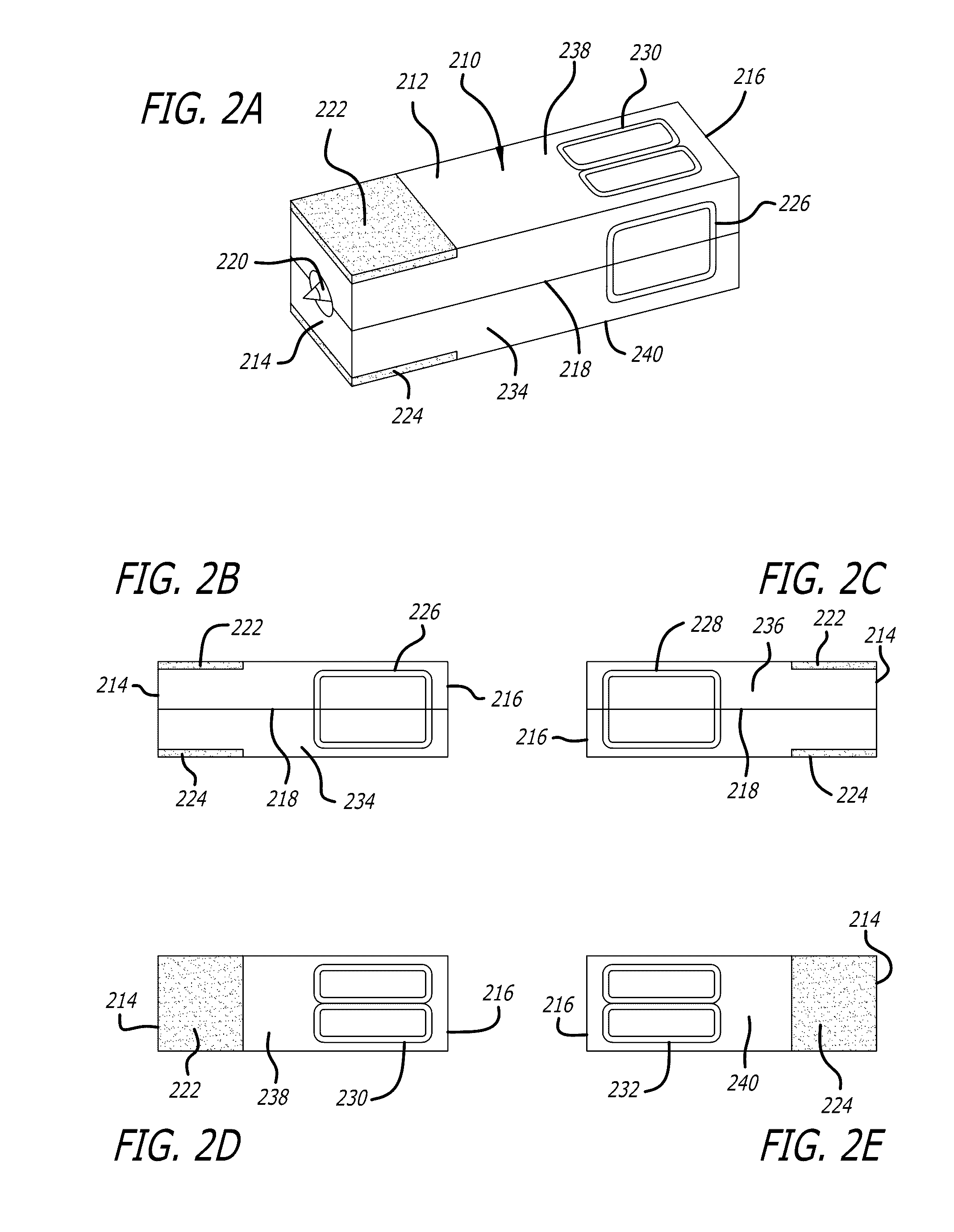System and method for magnetically launching projectiles or spacecraft
a magnetic and rocket technology, applied in the field of system and method for electromagnetically rocketing payloads, can solve the problems of limited maximum practical velocity of coil guns, limited maximum practical velocity of launched projectiles, and need to replace rails on a regular basis, so as to reduce the cost of power conditioning, eliminate mechanical contact and friction of payloads, and reduce the effect of friction
- Summary
- Abstract
- Description
- Claims
- Application Information
AI Technical Summary
Benefits of technology
Problems solved by technology
Method used
Image
Examples
first embodiment
Operation
[0055]The Launch craft is accelerated along the launch tube by a Lorentz force generated by the interaction between the transverse direct current (DC) dipole magnetic field 314 and the current flowing through conducting plates 222 and 224 located on sabot 212.
[0056]The DC dipole magnetic field inside launch tube 110 is generated by superconducting (SC) loop assembly 124, 126. The SC cables present in assembly 124, 126 run along the left and right exterior sides of launch tube 110 and are connected together at a predetermined distance and position away from the start 138 and exit 136 ends of launch tube 110 to form a set of long loops that carry continuous, constant DC current. The left and right sides are connected at a sufficient distance from the ends of launch tube 110 so that the desired uniformity of field 314 is not affected.
[0057]In one embodiment, current flows through the right side SC cables of assembly 124, 126 in a direction from start 138 towards exit 136 of la...
PUM
 Login to View More
Login to View More Abstract
Description
Claims
Application Information
 Login to View More
Login to View More - R&D
- Intellectual Property
- Life Sciences
- Materials
- Tech Scout
- Unparalleled Data Quality
- Higher Quality Content
- 60% Fewer Hallucinations
Browse by: Latest US Patents, China's latest patents, Technical Efficacy Thesaurus, Application Domain, Technology Topic, Popular Technical Reports.
© 2025 PatSnap. All rights reserved.Legal|Privacy policy|Modern Slavery Act Transparency Statement|Sitemap|About US| Contact US: help@patsnap.com



